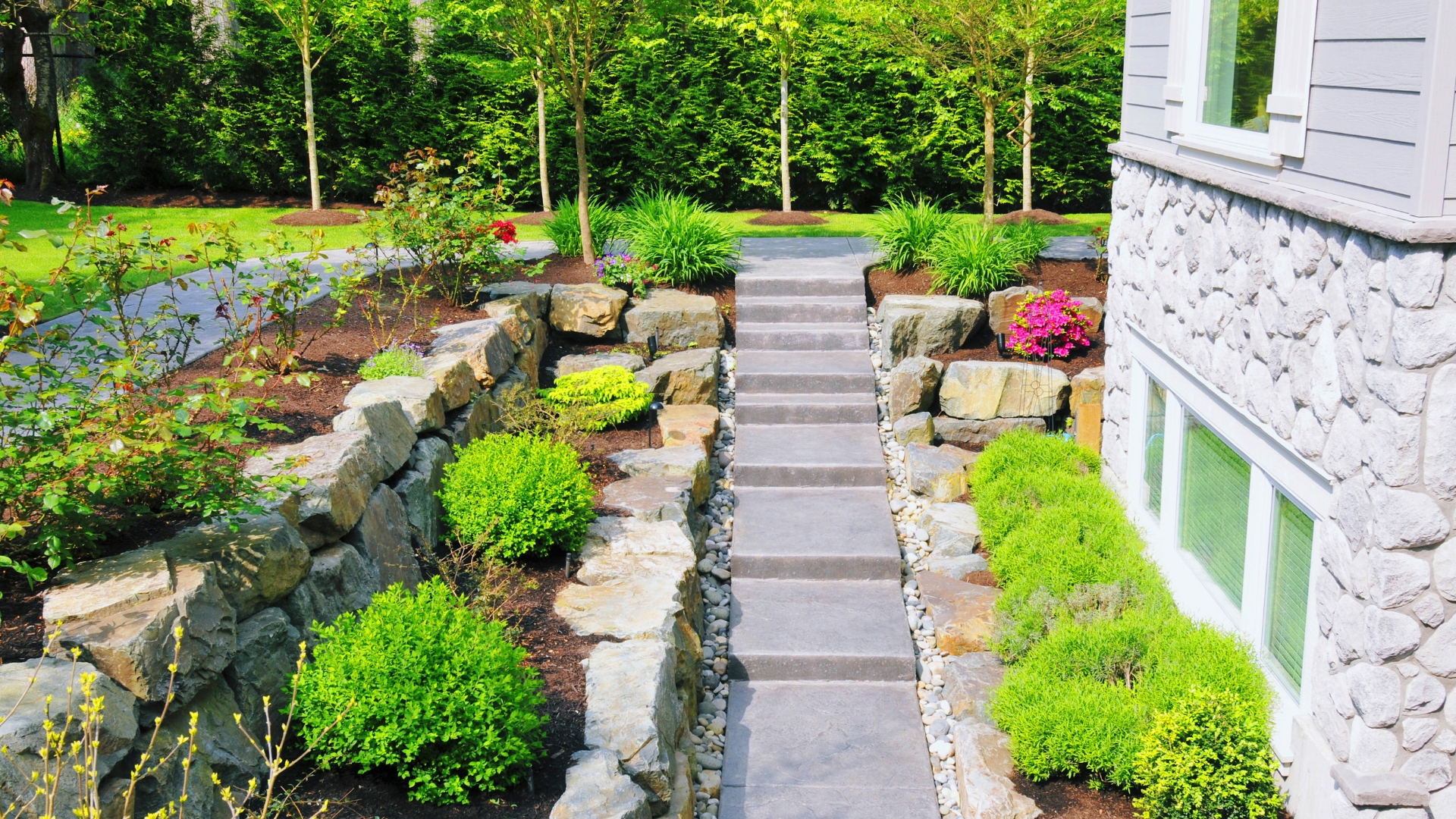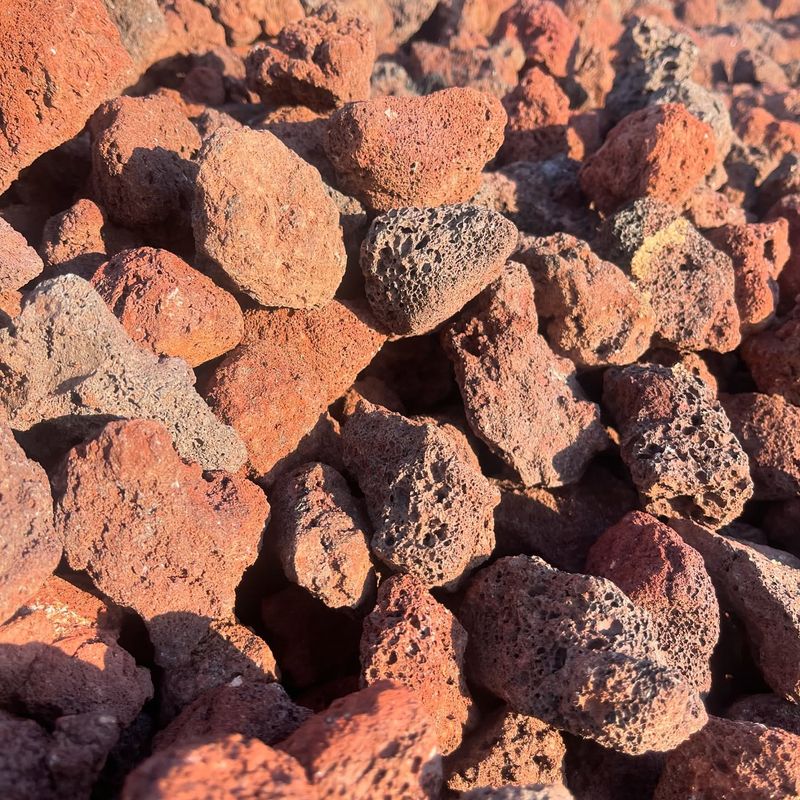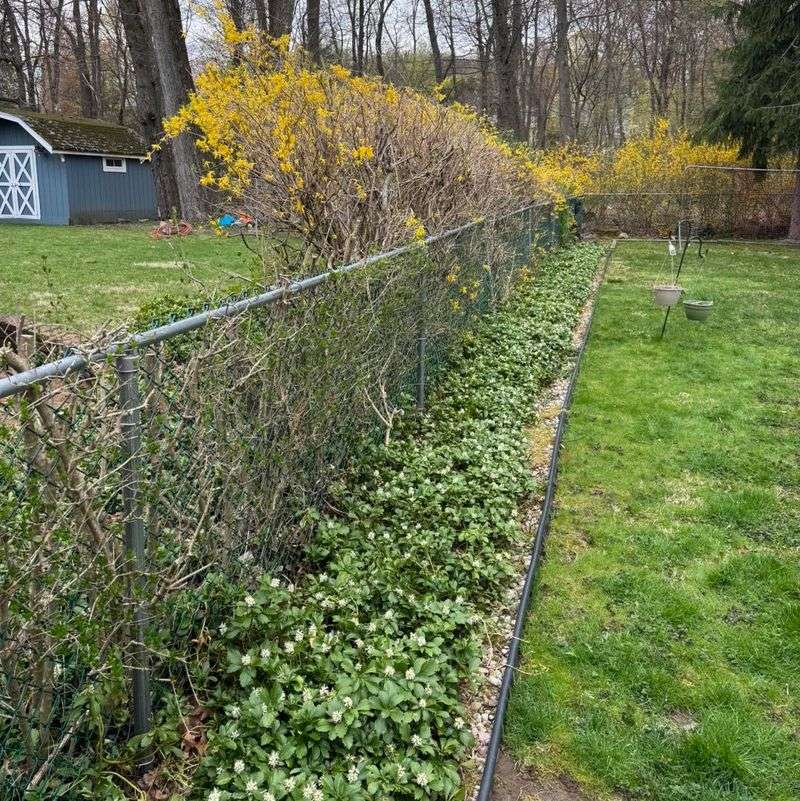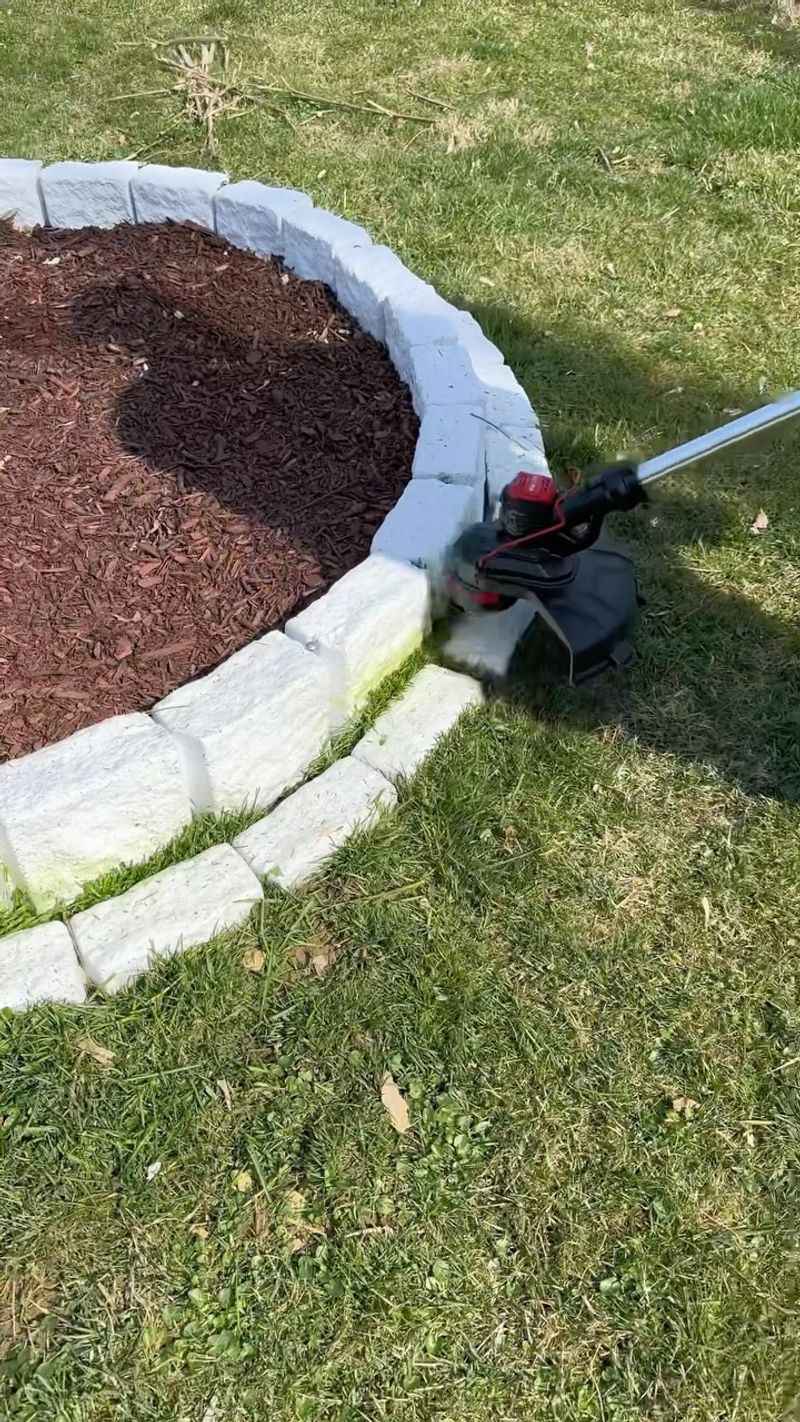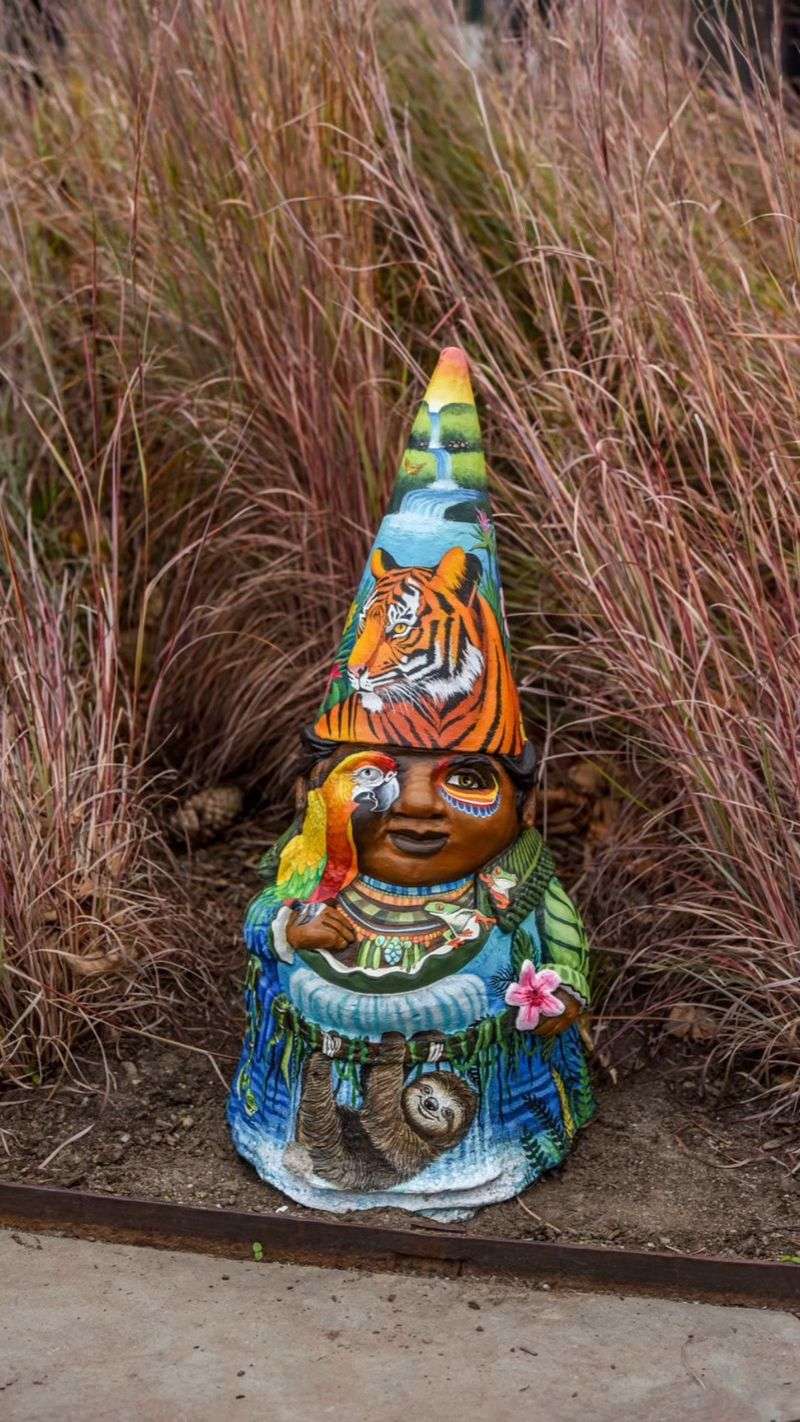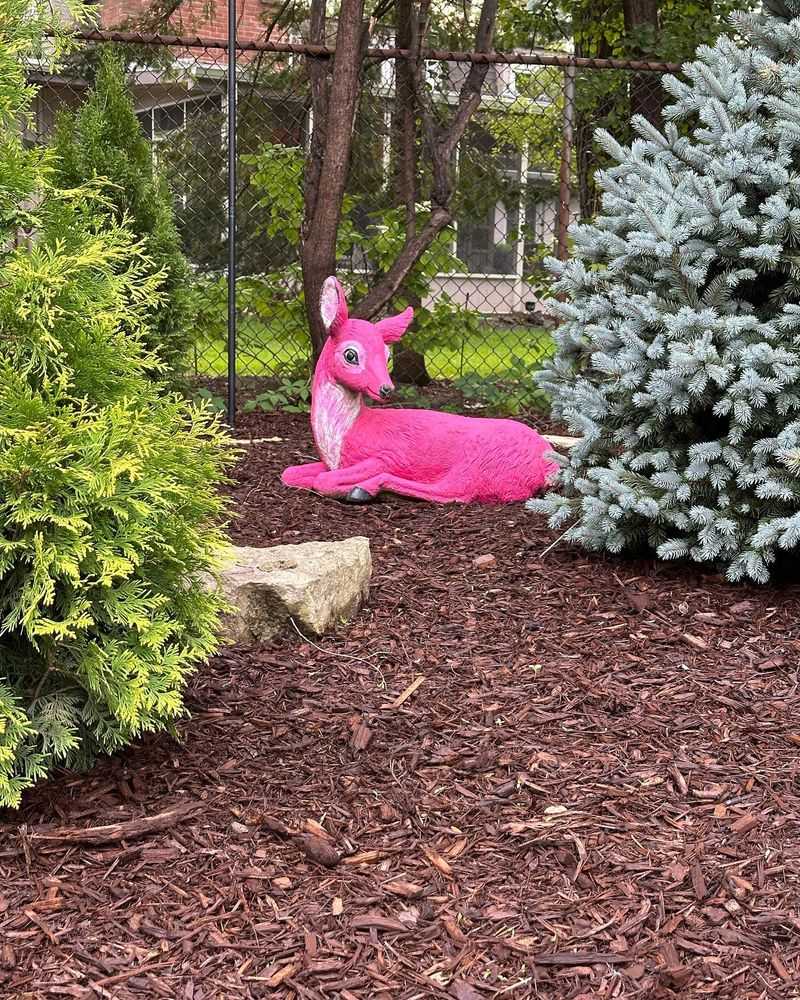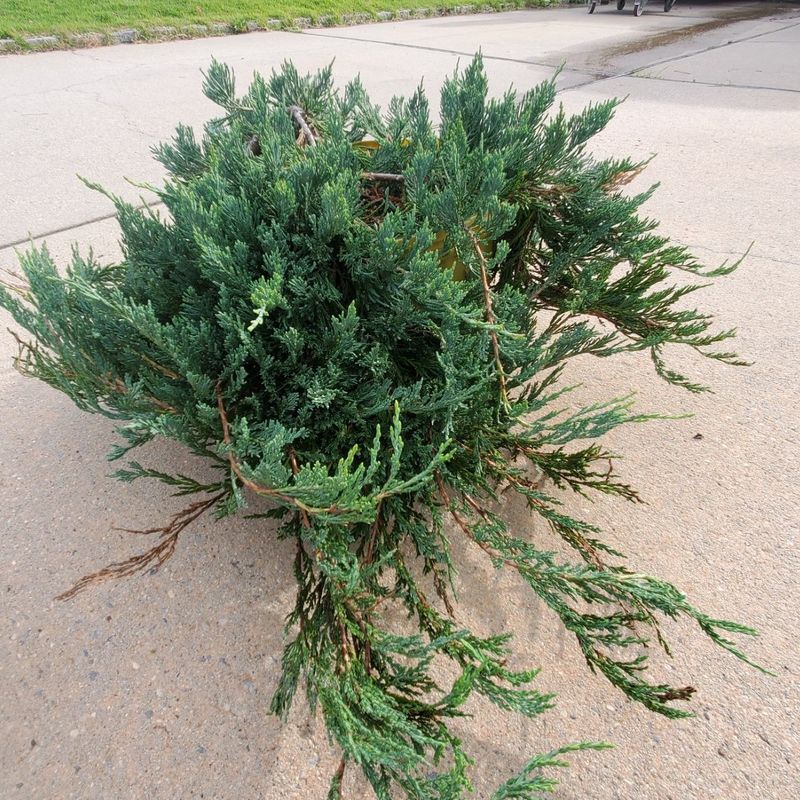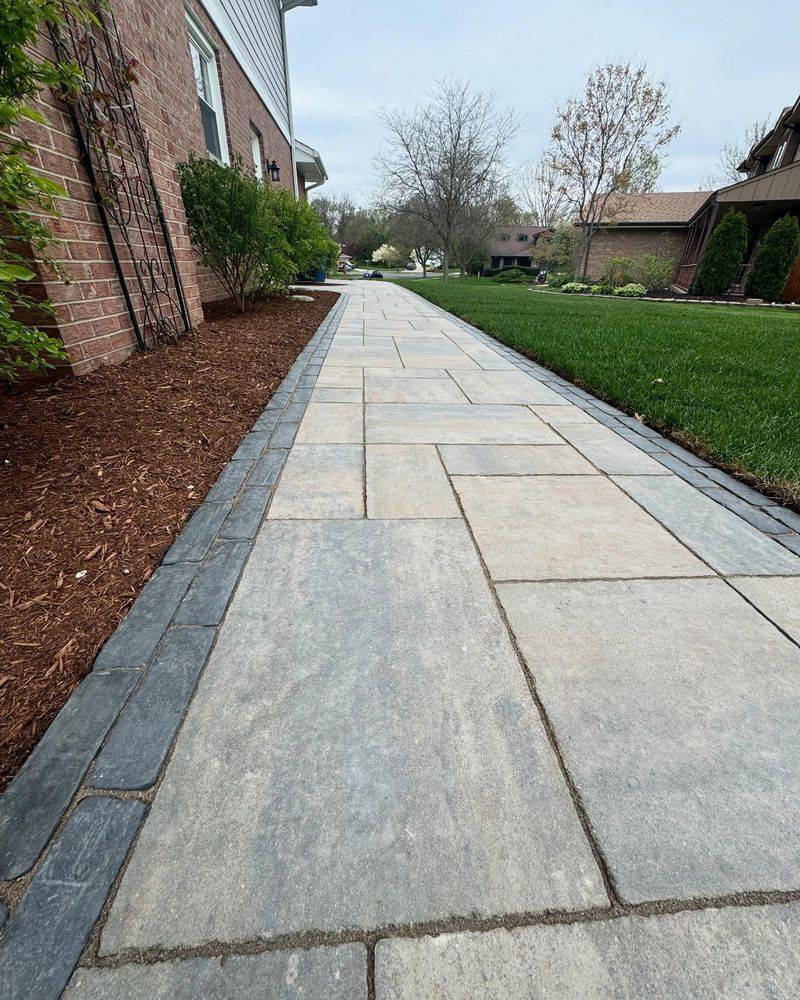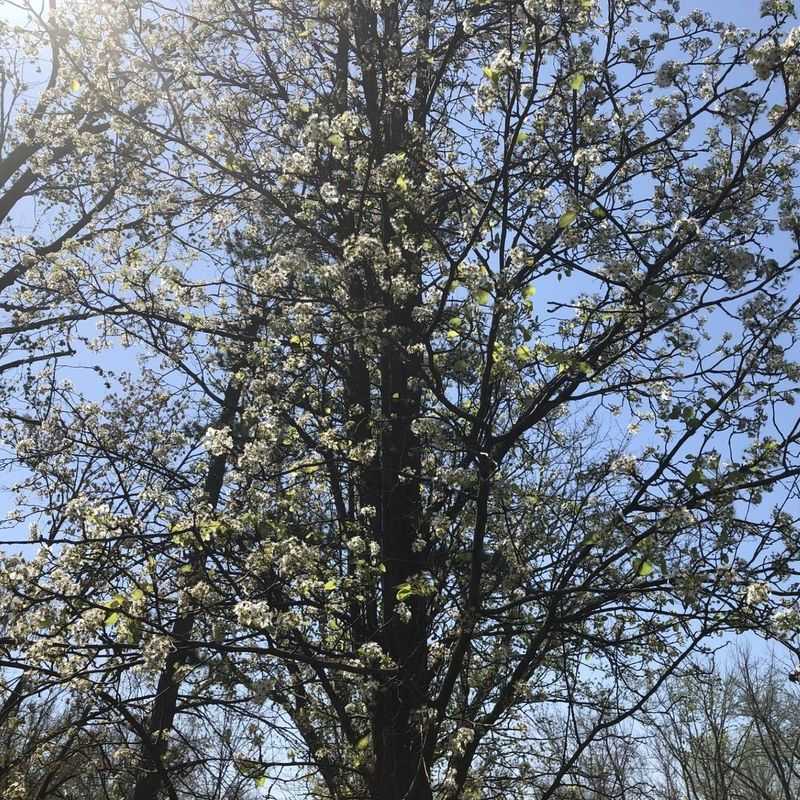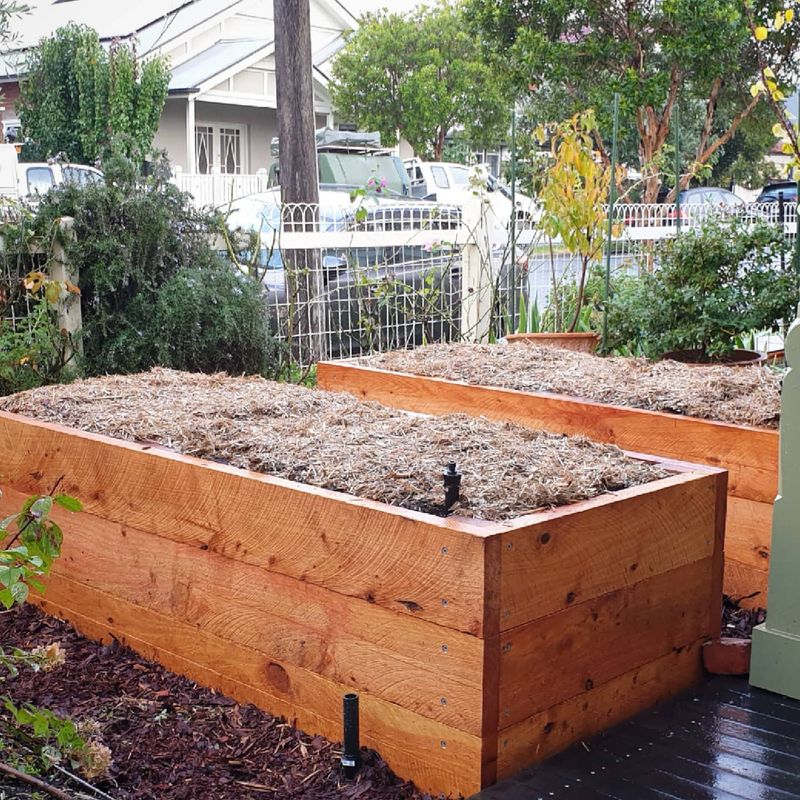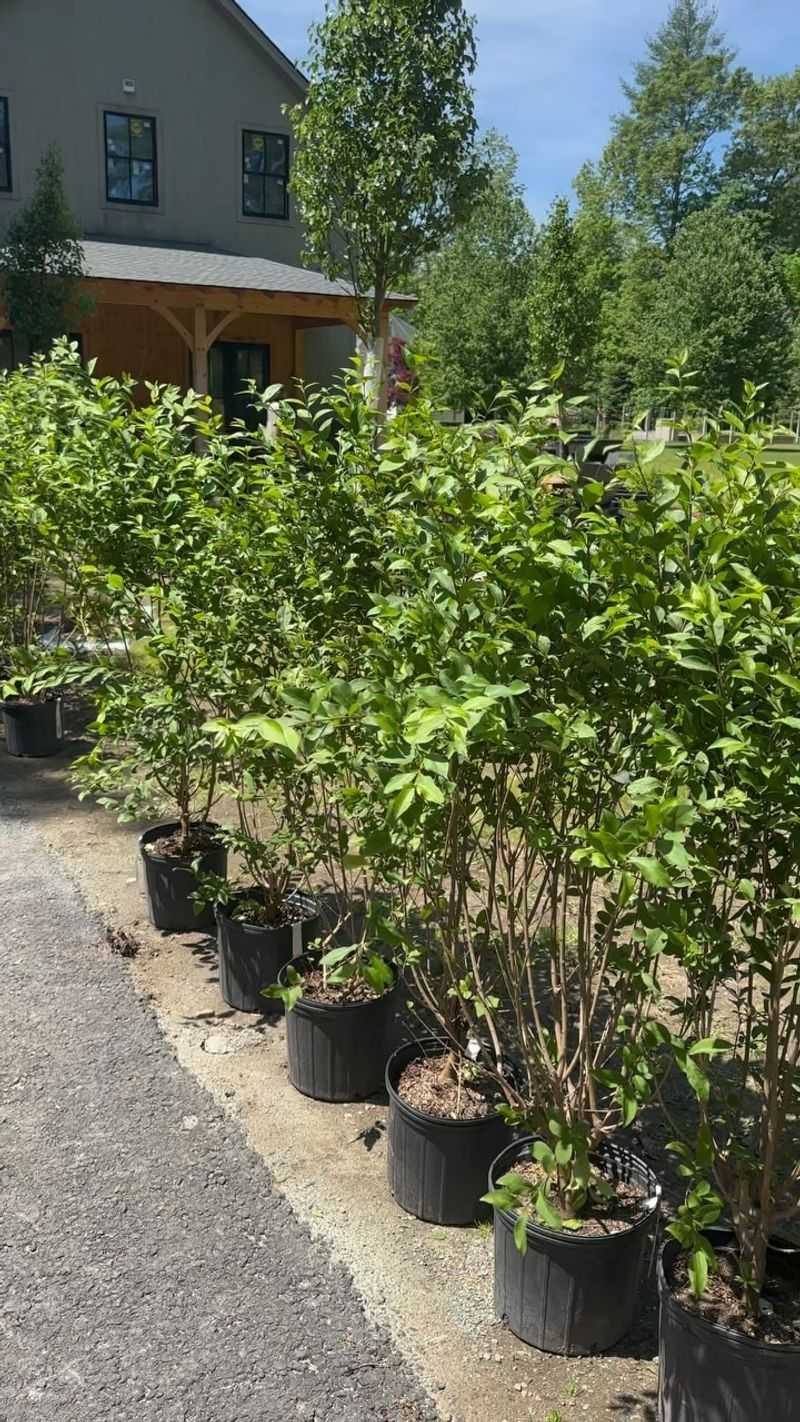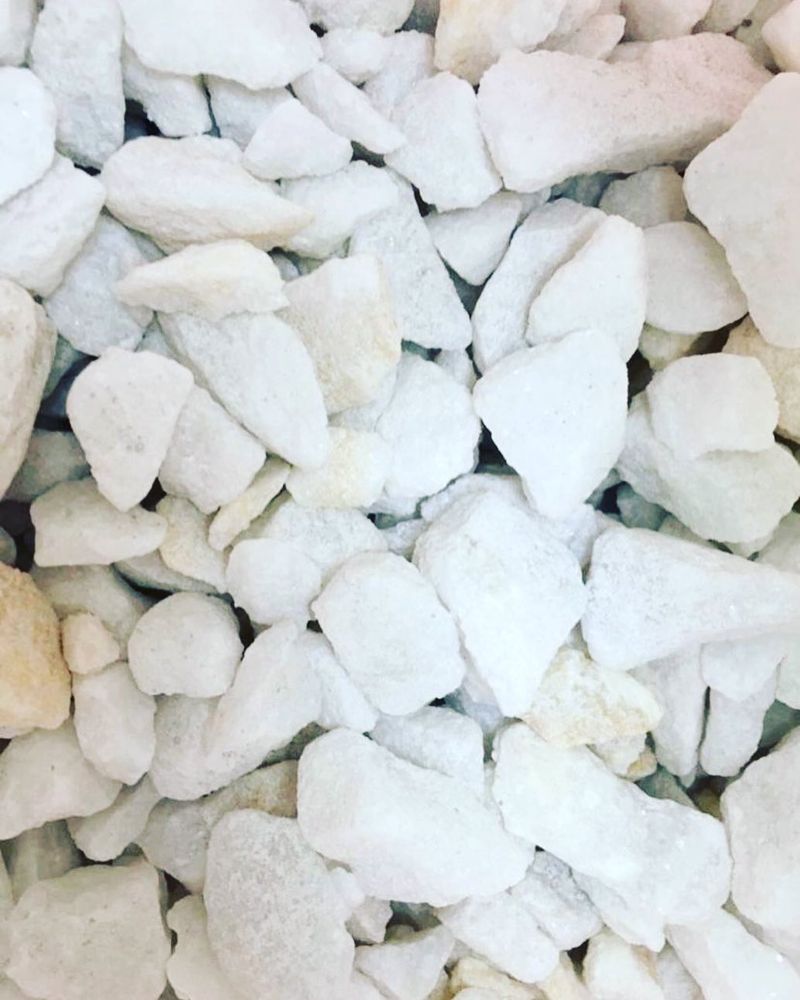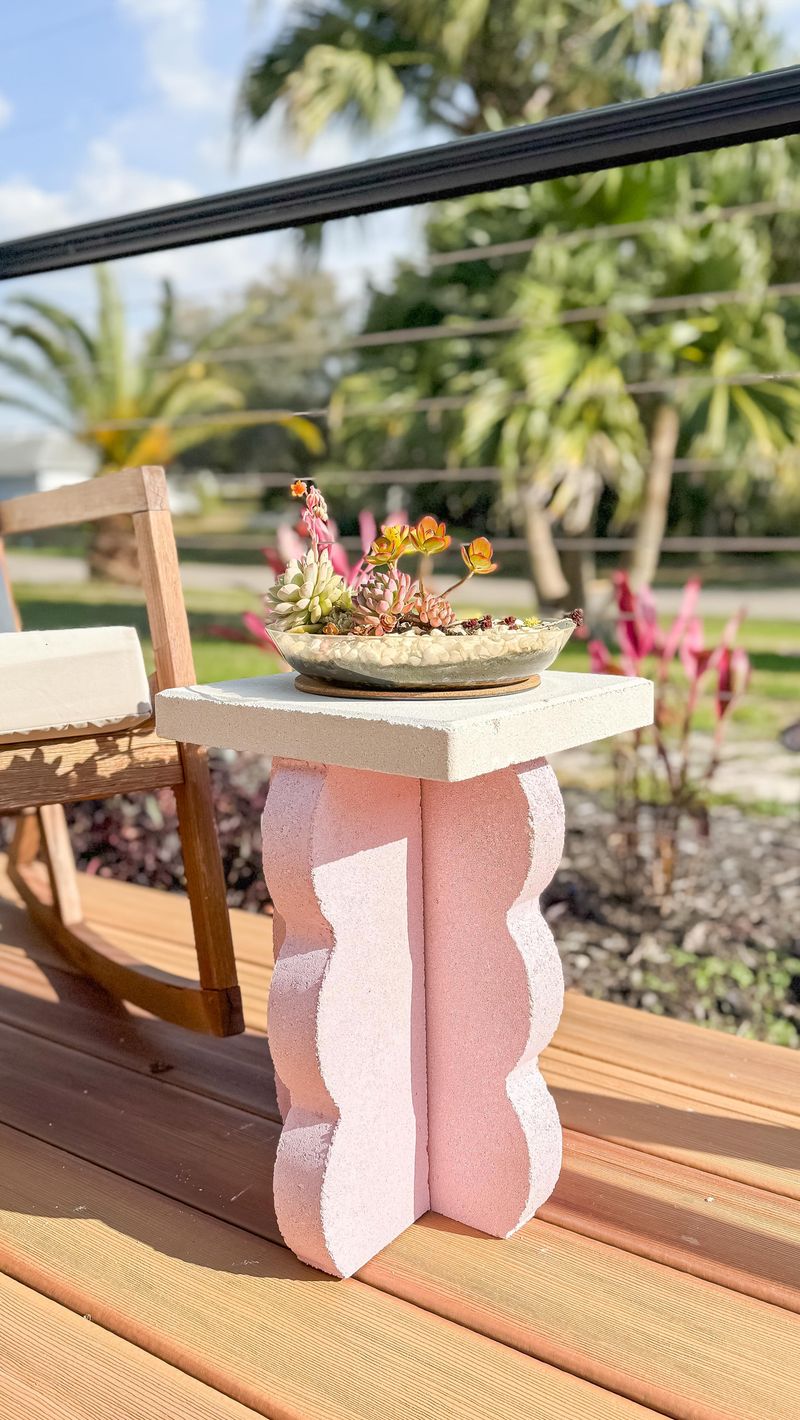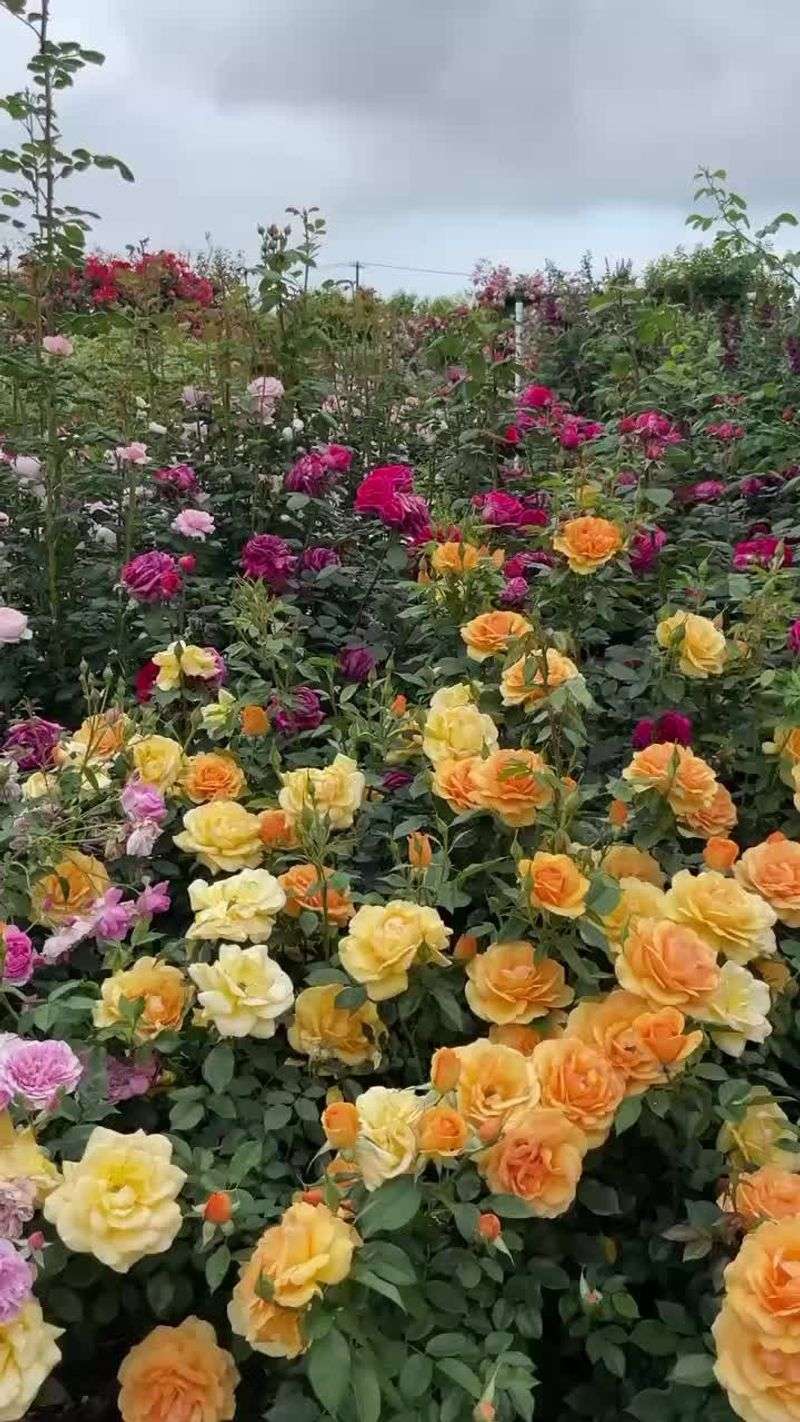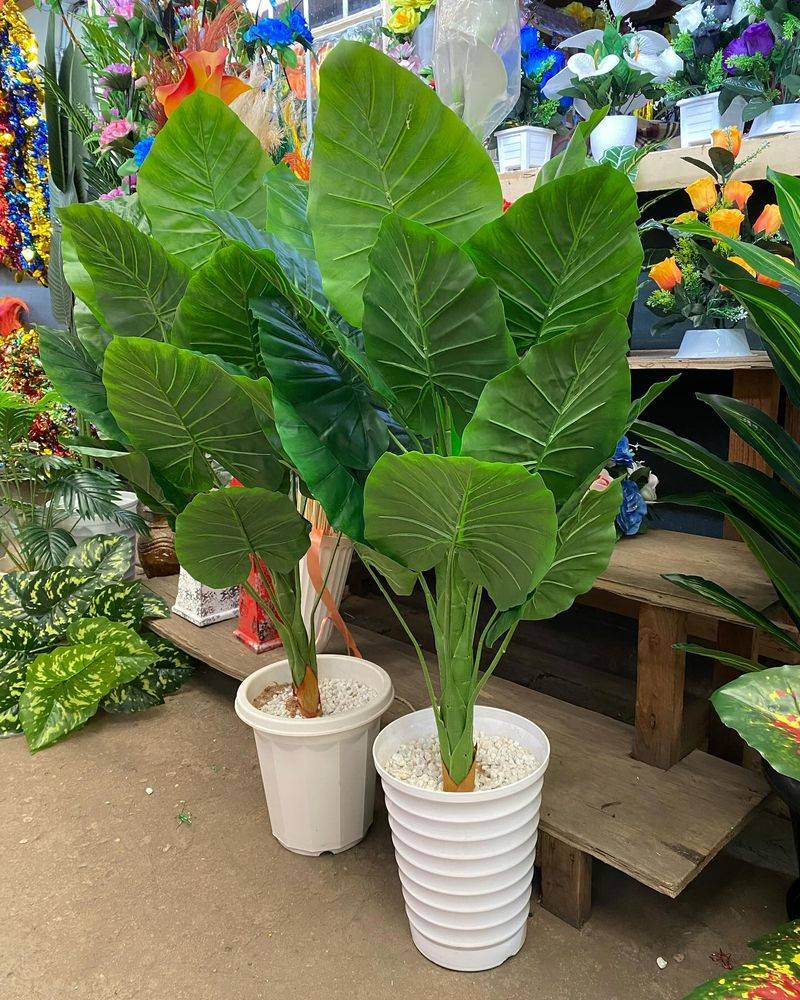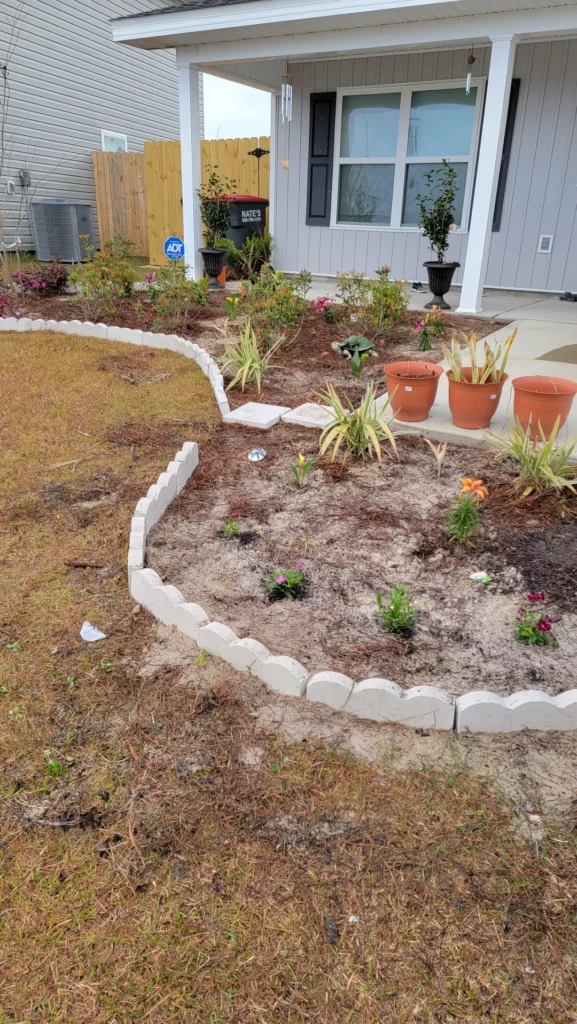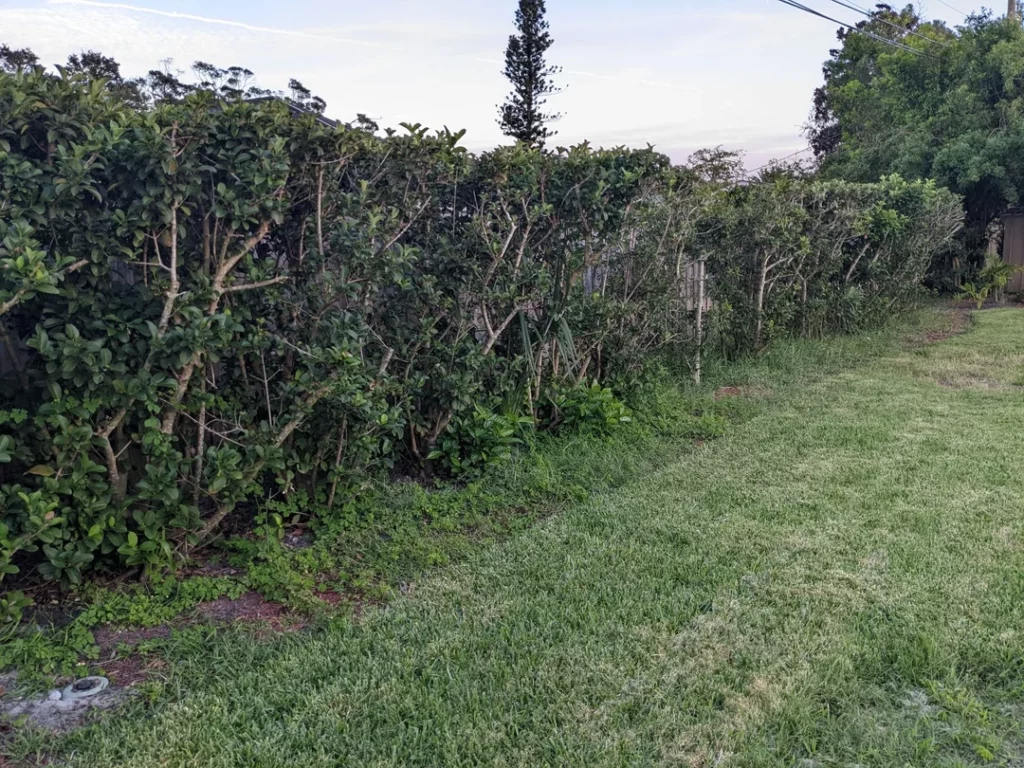Your backyard should be your escape—not a blast from the past (and not in a good way). Some landscaping trends age like fine wine… others, well, not so much.
I’ve spotted a few backyard looks that scream “early 2000s” and not in a nostalgic way. If you’re planning a refresh, knowing what not to do is just as important as knowing what works.
Let’s weed out the dated designs and make room for ideas that actually elevate your outdoor space.
1. Lava Rock Mulch
Remember those red volcanic pebbles that were all the rage in the 80s and 90s? Lava rock mulch once dominated suburban landscapes as a supposedly maintenance-free ground cover. Unfortunately, these rocks eventually collect dirt, debris, and fallen leaves, creating a messy look that’s nearly impossible to clean.
Unlike organic mulches that break down and nourish your soil, these permanent stones offer no benefits to your garden ecosystem. They also heat up significantly in summer, potentially stressing nearby plants.
Today’s gardens favor natural wood mulches, decorative pebbles in neutral tones, or groundcover plants that provide living color while suppressing weeds naturally.
2. Railroad Tie Borders
Once considered a rugged, rustic choice for garden borders and retaining walls, these chunky wooden beams have fallen firmly out of favor. Railroad ties contain creosote and other chemicals that can leach into your soil and harm both plants and the environment.
Beyond environmental concerns, these massive timbers create a distinctly 1970s vibe that immediately dates your landscape. Their rough, imposing appearance lacks the refined touch modern landscapes embrace.
Contemporary yards feature natural stone walls, concrete pavers, or metal edging that offer cleaner lines and safer materials while still providing needed structure to garden beds.
3. Perfect Circle Planting Beds
Symmetrical round flower beds dropped in the middle of lawns scream suburban 1990s. These perfectly circular islands often feature a lone tree surrounded by a ring of annual flowers, creating an unnaturally formal look that feels disconnected from the rest of the landscape.
Modern garden design embraces more organic, flowing shapes that mimic natural landscapes. Contemporary beds feature curved, irregular forms that lead the eye through the garden space and create visual interest.
For a more updated look, consider expanding those circular beds into kidney or teardrop shapes that connect to other landscape elements, creating a more cohesive and natural-feeling outdoor space.
4. Plastic Lawn Edging
Those wavy black plastic borders poking out of the ground between your lawn and flower beds instantly give away an outdated landscape. Often these plastic strips heave with freeze-thaw cycles, becoming more visible over time and creating tripping hazards rather than clean divisions.
Cheap plastic edging typically fades, cracks, and deteriorates within a few seasons, requiring constant replacement and adjustment. Even when new, these artificial borders create a distinctly unnatural line that draws attention for all the wrong reasons.
Today’s landscapes favor natural stone edging, metal borders that develop attractive patinas, or clean-cut trench edges that maintain separation between lawn and beds without introducing foreign materials.
5. Concrete Garden Gnomes
Those colorful little bearded fellows might hold nostalgic charm, but they’ve become the poster children for tacky yard decor. Garden gnomes and other mass-produced concrete figures like frogs, rabbits, and mushrooms create a cluttered, theme-park quality that detracts from natural beauty.
When scattered throughout flower beds, these kitschy characters compete for attention with your actual plants. Their bright colors and cartoonish appearance clash with the sophisticated palette of a well-designed garden.
Modern landscapes favor more subtle decorative elements – perhaps a single sculptural piece with artistic merit, weathered stone lanterns, or architectural plant containers that complement rather than compete with the living elements.
6. Excessive Yard Ornaments
A yard filled with spinning pinwheels, reflective gazing balls, and plastic flamingos creates a chaotic, carnival-like atmosphere that screams outdated. This “more is more” approach to garden decoration was popular in decades past but now reads as cluttered and lacking intention.
Too many decorative elements compete for attention and prevent the eye from appreciating the natural beauty of your plants and hardscaping. Each new ornament added diminishes the impact of everything else in your landscape.
Contemporary landscapes embrace restraint, featuring carefully selected statement pieces that complement the garden’s style. Quality over quantity is the modern approach – perhaps one beautiful bird bath or a single striking sculpture placed thoughtfully to create a focal point.
7. Foundation Junipers
Those scraggly evergreen shrubs planted in a row against your home’s foundation were the default landscaping choice for decades. Foundation junipers often grow too large for their spaces, becoming overgrown monstrosities that block windows and create maintenance headaches.
As they age, these plants frequently develop bare patches, disease issues, and harbor spiders and other pests close to your home. Their dense growth can trap moisture against your foundation, potentially contributing to structural problems.
Modern landscapes feature more diverse foundation plantings with varying heights, textures, and seasonal interest. Mixed borders of compact shrubs, ornamental grasses, and perennials create dynamic, layered looks that enhance rather than hide your home’s architecture.
8. Straight Concrete Pathways
Nothing says “builder-grade basic” quite like those ruler-straight concrete sidewalks cutting through yards at harsh right angles. These utilitarian paths prioritize function over form, creating a municipal rather than personal feel in your outdoor space.
Straight concrete walkways fail to invite exploration or create visual interest in your landscape. Their rigid lines contradict the organic nature of garden spaces and miss opportunities to guide visitors through your yard’s best features.
Updated landscapes feature gently curving paths made from materials with character – flagstone, brick pavers, or decomposed granite – that meander through garden spaces. These thoughtfully designed walkways create journey-like experiences rather than just providing A-to-B transportation.
9. Dying Bradford Pear
Once the darling of suburban developments, these fast-growing trees with their symmetrical shapes and spring flower displays have fallen dramatically from grace. Bradford pears develop notoriously weak branch structures that split and break during storms, creating hazards and unsightly damaged canopies.
Beyond their structural problems, these trees have proven invasive in many regions, escaping cultivation and crowding out native species. Their brief spring flowers, while showy, produce an unpleasant fragrance often compared to rotting fish.
Contemporary landscapes favor native tree species that offer four-season interest, wildlife value, and stronger branch structures. Regional natives like dogwoods, redbuds, or serviceberries provide similar ornamental qualities without the drawbacks.
10. Isolated Flower Beds
Scattered, disconnected flower beds that dot the landscape without relation to each other create a fragmented, piecemeal appearance. These isolated “flower islands” floating in seas of lawn fail to create cohesive design flow and can make maintenance more time-consuming.
When garden beds lack connection to other landscape elements, they appear as afterthoughts rather than intentional design features. This disjointed approach was common in older landscaping but reads as outdated and amateur today.
Modern landscape design creates visual connections between planting areas through repeated elements, flowing bed lines, or hardscape features that tie spaces together. Connecting beds with pathways or expanding them to reduce lawn area creates more cohesive, contemporary outdoor spaces.
11. Privet Hedges
Those perfectly clipped green walls surrounding properties like living fences have fallen out of style for good reasons. Privet hedges require constant maintenance to maintain their formal appearance, with most homeowners finding themselves unable to keep up with the frequent trimming needed.
Beyond the maintenance burden, these monotonous shrubs offer little visual interest or wildlife value. Their dense growth often becomes a haven for pests, and many privet species have proven invasive, spreading aggressively into natural areas.
Today’s landscapes embrace mixed borders that combine various shrubs, perennials, and ornamental grasses to create more biodiverse, lower-maintenance boundaries. These mixed screens provide year-round interest through varying colors, textures, and seasonal features.
12. Crushed White Stone
Those blindingly bright white limestone or marble chips covering entire garden beds were once considered low-maintenance alternatives to mulch. Unfortunately, these stark white stones create harsh glare, reflect heat onto plants, and quickly look dirty as soil, leaves, and debris accumulate.
White crushed stone creates an unnatural, stark contrast against the organic shapes and colors of plants. The harsh brightness draws attention away from your garden’s living elements and creates a sterile, clinical appearance.
Contemporary gardens favor natural-colored mulches, river rock in earth tones, or groundcover plants that complement rather than compete with plantings. These softer alternatives create more harmonious backdrops that allow your garden’s true stars – the plants – to shine.
13. Scalloped Concrete Edgers
Those mass-produced concrete borders with their repetitive scalloped or fluted edges instantly transport viewers back to the 1980s and 90s. These rigid, uniform edgers create an artificial boundary that contradicts the natural flow of garden spaces.
When lined up around beds, these manufactured borders create a distinctly suburban cookie-cutter look that lacks sophistication or personality. Their uniform appearance and obvious manufactured origin clash with the organic nature of plants and garden materials.
Modern landscapes favor more subtle, natural-looking transitions between spaces – perhaps a simple steel edge that disappears visually, a low border of natural stone, or even a clean-cut edge between lawn and beds that maintains separation without introducing artificial elements.
14. Formal Rose Gardens
Those symmetrical beds of hybrid tea roses arranged in rigid rows like soldiers on parade have fallen out of contemporary favor. These high-maintenance formal rose gardens require intensive spraying, pruning, and care while offering beauty only during their brief blooming periods.
Traditional rose gardens often feature roses isolated from other plants, surrounded by bare soil or mulch, creating a sparse, utilitarian appearance for much of the year. Their formal, museum-like quality feels disconnected from today’s more relaxed outdoor living spaces.
Modern gardens incorporate roses into mixed plantings where they mingle with perennials, ornamental grasses, and companion plants. Today’s favored rose varieties include low-maintenance landscape roses that provide continuous bloom without chemical dependency.
15. Artificial Plants
Fake flowers and plastic plants stuck into garden beds or porch planters immediately signal outdated landscaping choices. These synthetic imitations might seem convenient, but they quickly fade, collect dust, and fool absolutely no one with their unnatural colors and textures.
Artificial plants provide none of the environmental benefits of living plants – no oxygen production, no habitat for pollinators, no seasonal changes to enjoy. Their static, unchanging appearance contradicts the dynamic nature that makes gardens special.
Today’s low-maintenance alternatives include drought-tolerant native plants, succulents, and other resilient species that provide authentic beauty with minimal care. Even the most realistic fake plants can’t compete with the subtle variations and seasonal changes of living garden elements.
16. Red Mulch
That bright, brick-colored mulch that once seemed like a bold design statement now feels more like a landscaping misstep.
Most red mulch is dyed using chemicals that may leach into the soil, potentially affecting plant health. Over time, it fades to an unsightly pinkish-orange, especially in sunny spots, creating a patchy, uneven look.
Today’s mulches lean toward natural, earthy tones like dark brown, black, or cedar that enhance plant colors rather than overpower them. Organic options also nourish the soil and blend more seamlessly into modern garden palettes.
17. Symmetrical Shrub Rows
The old-school approach of lining up identical shrubs in neat, evenly spaced rows across the front yard or along driveways may offer a sense of order, but it comes at the cost of creativity and natural beauty.
This repetitive, uniform style often results in a static look that feels uninspired and overly formal. Without variation in texture, height, or color, these rows fade into the background and do little to elevate your home’s curb appeal.
Contemporary landscapes favor staggered plant groupings, layered plantings, and mixed textures that create movement and dimension. Swapping straight rows for asymmetrical designs using a variety of native shrubs, grasses, and perennials helps create a more dynamic and inviting outdoor space.

